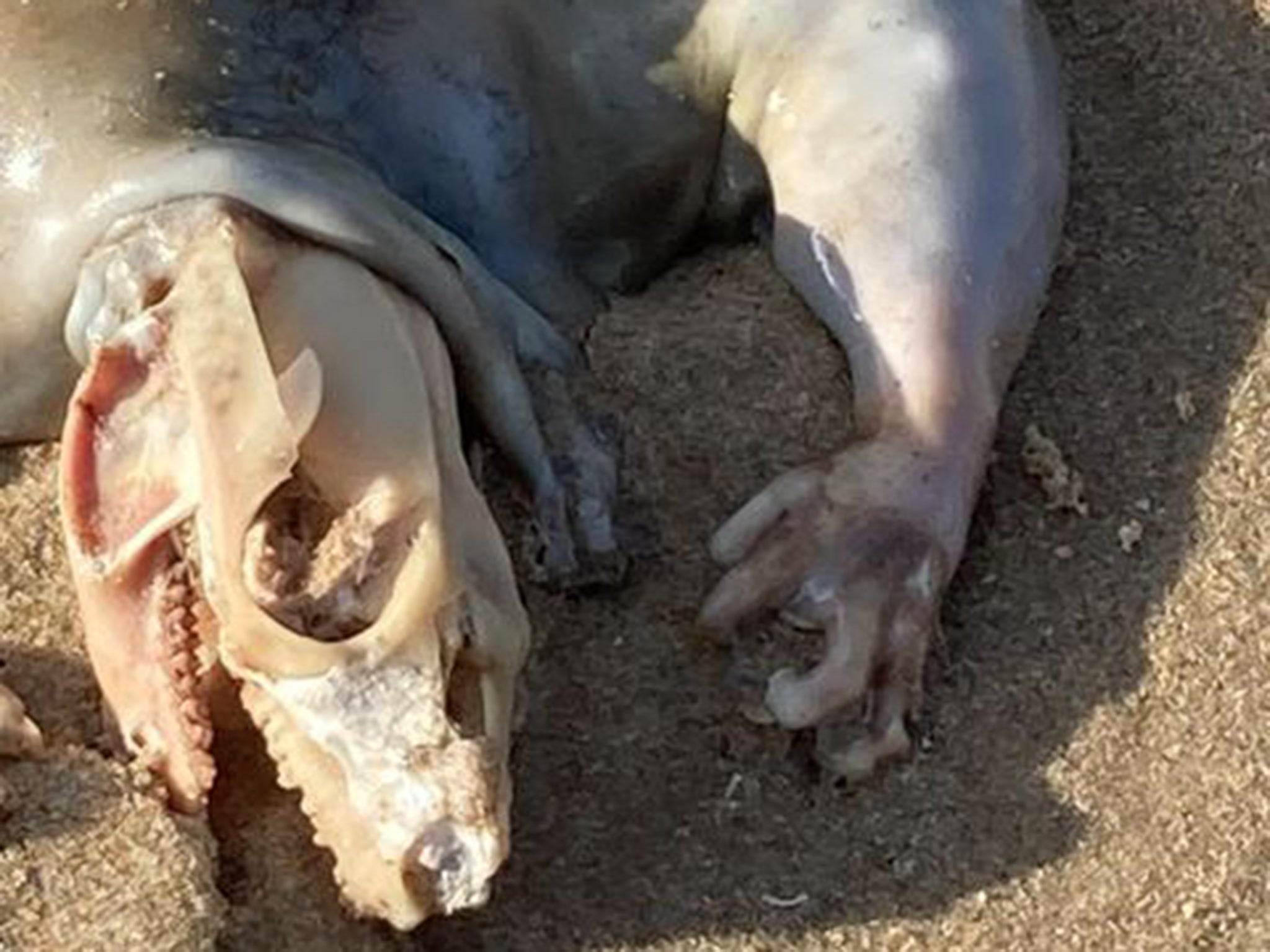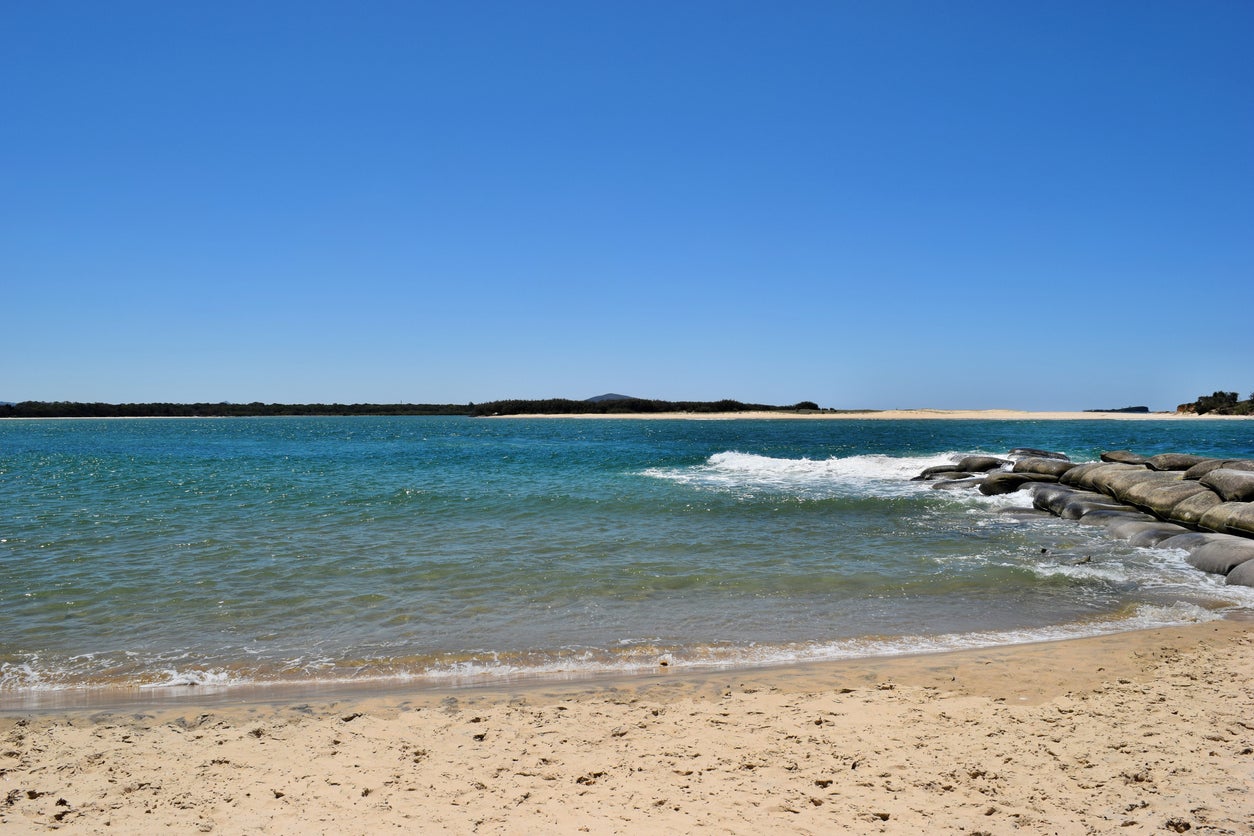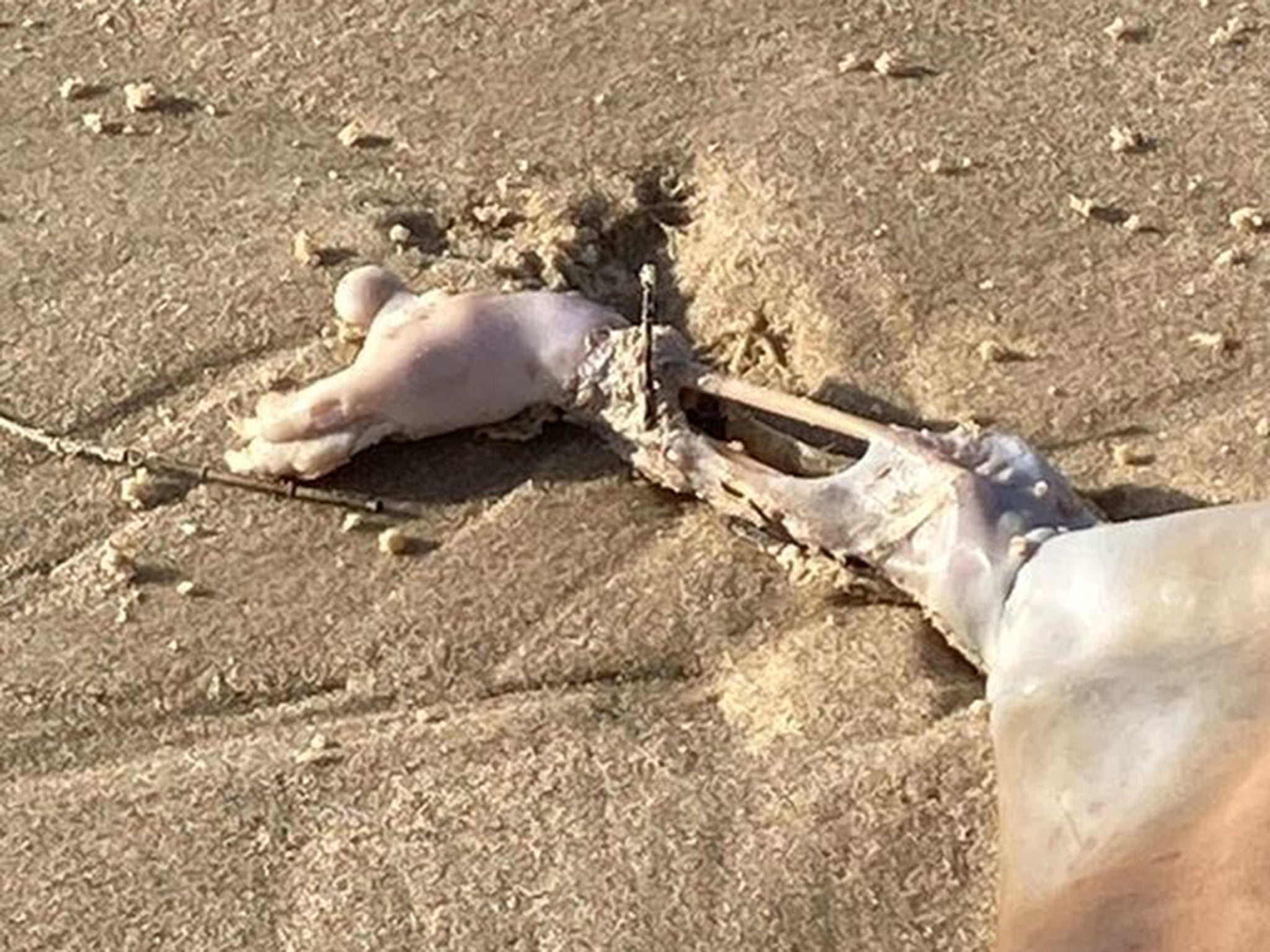Mystery as unidentified ‘alien’ creature washes up on beach after floods
Alex Tan discovered the remains while walking on Queensland’s Maroochydore Beach
Your support helps us to tell the story
From reproductive rights to climate change to Big Tech, The Independent is on the ground when the story is developing. Whether it's investigating the financials of Elon Musk's pro-Trump PAC or producing our latest documentary, 'The A Word', which shines a light on the American women fighting for reproductive rights, we know how important it is to parse out the facts from the messaging.
At such a critical moment in US history, we need reporters on the ground. Your donation allows us to keep sending journalists to speak to both sides of the story.
The Independent is trusted by Americans across the entire political spectrum. And unlike many other quality news outlets, we choose not to lock Americans out of our reporting and analysis with paywalls. We believe quality journalism should be available to everyone, paid for by those who can afford it.
Your support makes all the difference.A mysterious "alien-like" creature with four limbs and a "reptile" skull has washed up on a beach in Australia.
Queensland man Alex Tan was stunned to come across the remains while walking on Maroochydore Beach on the Sunshine Coast, about 63 miles north of Brisbane, earlier this week.
He said he came across creature not long after floods hit the area.
“I’ve stumbled across something weird,” he said to the camera in an Instagram post. “This is like one of those things you see when people claim they’ve found aliens.’
The as yet unidentified creature has four limbs, a reptile-like skull and a tail.


People responding to Mr Tan’s post suggested the remains might be those of a baby kangaroo or a wallabe.
Mr Tan said at first he thought it was a possum but conceded he is unsure.
“I’m excited to hear what it would be,” he told news.com.au.

Beachgoers in California were stunned in May last year when a jet-black creature with a gaping underbite, spikey teeth and a tentacle covered appendage and bulb protruding from its head, washed washed up on the shores of San Diego.
Scientists at the city’s Institution of Oceanography University soon identified it as a Pacific football fish, a deep-sea dweller.
Pacific football fishes are so rare so rare that only 31 specimens have been found in more than a century since it was first discovered.
They are aspecies of anglerfish that normally live at depths of more than 3,000 ft.

Join our commenting forum
Join thought-provoking conversations, follow other Independent readers and see their replies
Comments